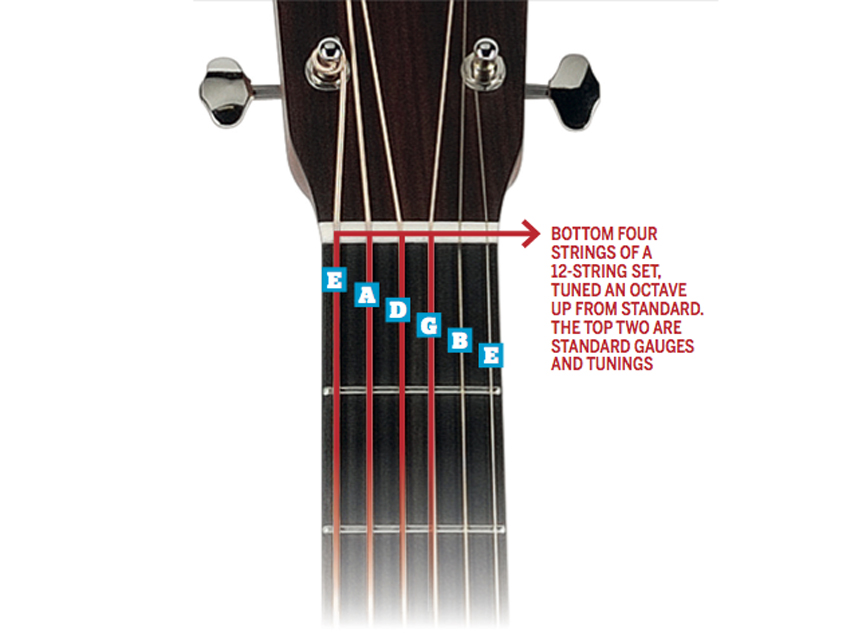
Technique 101
ACOUSTIC WEEK If you want to play the acoustic guitar effectively, then it’s worth adding some extra basic techniques and approaches to how you would play your electric guitar.
The following open tuning, picking and strumming exercises are aimed at beginners and improvers alike who are keen to explore the extra dynamic and tonal opportunities offered by the acoustic instrument.

DADGAD
DADGAD tuning is generally regarded as the discovery of late, great English folk guitarist Davy Graham and is a revelation for many players.
While enjoying the distinction of being one of the few tunings you can actually pronounce, it’s unrivalled in its user- friendliness – all those D and A strings are brimming with drone and melodic potential.
It’s classed as a ‘modal’ tuning – neither major nor minor – allowing easy adaptability to various moods. Experiment; noodling in DADGAD can sound very flattering.

Open Csus2
This is the rich and beautiful open Csus2, giving you CGDGCD, low to high.
But for the ease with which DADGAD can be pronounced as a word, we struggle to see why Csus2 tuning cannot share the popularity that its cousin has enjoyed.
It provides excellent scope for playing drone-like strumming accompaniment, open-string runs and deep, resonant bass notes. Some well-known exponents of the tuning include English folk legends Nic Jones and Martin Simpson, and US guitarist Steve Baughman.

Nashville tuning
While you can use the two tunings on the left instantly, this one takes a little more planning because you need to restring your guitar.
It sounds like a hassle, but by golly is it worth it! Nashville tuning uses what is, in effect, the thinnest strings of a 12-string set (for example, from low to high 0.027, 0.018, 0.014, 0.009, 0.016, 0.012).
As a result, it’s also called high-strung guitar tuning. A good few of our chums have a guitar set aside purely for Nashville tuning. It works wonders layered alongside a regular-strung guitar.

Travis picking
Inspired by the sound of ragtime piano as well as country, jazz and blues, country and western legend Merle Travis played alternating bass parts with syncopated melodies, wowing audiences with his ‘band-in-a-box’ style.
His tunes, such as Cannonball Rag and Blue Smoke, have become country-picking favourites, as played by modern-day masters such as Tommy Emmanuel and Richard Smith. This example shows the basics.
Guitarist is the longest established UK guitar magazine, offering gear reviews, artist interviews, techniques lessons and loads more, in print, on tablet and on smartphones
Digital: http://bit.ly/GuitaristiOS
If you love guitars, you'll love Guitarist. Find us in print, on Newsstand for iPad, iPhone and other digital readers



